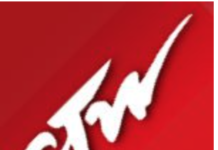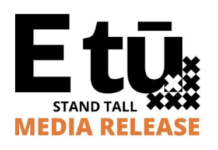‘Statistics NZ’ just released this ‘2007 – 18’ report today, that shows that our GHG (greenhouse gas) emissions static over the last 11 years which is disappointing, as some parts of the industry have made solid changes to their GHG emissions while others have failed, as road transport are amongst the worst performers here.
CEAC has for years been seeking Government to lower our Climate Emissions by balancing the ‘transport demand’ of freight between rail and road, to lower emissions of greenhouse gas, little has been achieved since we began voicing our lack of rail freight activity in 2000.
This 11yr statistical review from Statistics NZ of our ‘national emissions’ of GHG (Greenhouse Emissions) is showing no lowering in GHG since 2007 across all industries is disturbing, CEAC calls on Government to escalate the move to lower Climate emissions of those industries still failing to reduce climate emissions for all our own health and wellbeing and security of our families futures.
The public have been told by the Road Transport industry that 93% of the total ‘land freight’ is now carried on trucks whom they causally dismiss any damages they cause to the environment, who in global reports we view state that road freight emit up to 10 times the ‘Greenhouse emissions’ depending on the roads and hills they travel on, than the same amount of freight carried on rail; – so there is where we need to start by using more rail.
The second largest movement was for household, up 1,033 kilotonnes (11.8 percent). The increase in household emissions was largely from transport, up 1,005 kilotonnes (12.8 percent).
The other largest movements for 2018 (compared with 2007) were:
- agriculture, forestry, and fishing, up 653 kilotonnes (1.6 percent)
- construction, up 551 kilotonnes (81 percent)
- mining, down 516 kilotonnes (25 percent)
- manufacturing, up 491 kilotonnes (4.8 percent)
- transport, postal, and warehousing, up 363 kilotonnes (6.5 percent).
Air transport of freight is yet another high emitter of GHG’s as sadly the other transport of goods/freight was all bunched together as one emitter sadly, as it would be interesting to see how Air freight emission’s showed against water (shipping/ barging ect’ against the relatively small rail use here as road carries 93% rail and sea and air carries the other 7% combined..
Three regions accounted for just under half of total emissions in 2018
In 2018, Auckland, Waikato, and Canterbury combined accounted for 47 percent of total regional emissions. The regions with the least emissions were Marlborough, Tasman/Nelson, West Coast, and Gisborne. These four regions accounted for 5.8 percent of emissions in 2018. Both these proportions were constant across the 2007–18 period.
In 2018, the top three emitting regions accounted for 54 percent of both carbon dioxide and fluorinated gases but only 40 percent of methane and 45 percent of nitrous oxide emissions.
Auckland generated the most carbon dioxide, Canterbury the most methane
While Waikato had the highest greenhouse gas emissions of any region in 2018, Auckland recorded the highest emissions of carbon dioxide, which were driven by households and manufacturing. Auckland also had the highest levels of fluorinated gases, largely produced by the service industries (excluding transport, postal, and warehousing). Canterbury recorded the highest methane and nitrous oxide emissions in 2018, largely due to emissions from agriculture.
CEAC has carefully reviewed this subject and now has strongly requested that rail with steel wheels and if electric motivated is the best way to reduce our freight transport pollution and climate change emissions.






Good review, CEAC. Thanks.
https://www.youtube.com/watch?v=0zJHMMYa01g
Change in Transportation Future.
NZ has to bite the bullet and curb methane emissions urgently.
Dairy and fertiliser just cannot be proverbial sacred cows any longer.
Surely the future for generations ahead is far more important that the money fron continued polluting of the planet by dairy and fertiliser.
There are of course many other polluters but the big ones need to be hammered if they won’t respond to the softer approached given already.
Some farmers have responded by reducing herds, stopping the use of fertiliser, provided wetlands to help process the water and fenced off streams as well as made significant riparian -planting.
Other have done very little and corporate farming is just after the biggest dollar return..
Irrigation in Canterbury is obscene. This area was once our grain producer without the damaging irrigation, now installed for dairy.
Rail is a govt priority and Kiwirail should be directly under Govt control and management, and not as an independent player. Govt planning needs to be in place now for building more rolling stock here in New Zealand. Similarly new forms of passenger rail transport for short runs and modest passenger numbers needs to be developed. R & D for rail should be and in house govt responsibility building up Kiwi expertise.
Concrete construction cannot carry on the way it has and alternatives need to be implemented.
Degrowth is staring us in the face and few are flinching. There is not another alternative.
Comments are closed.